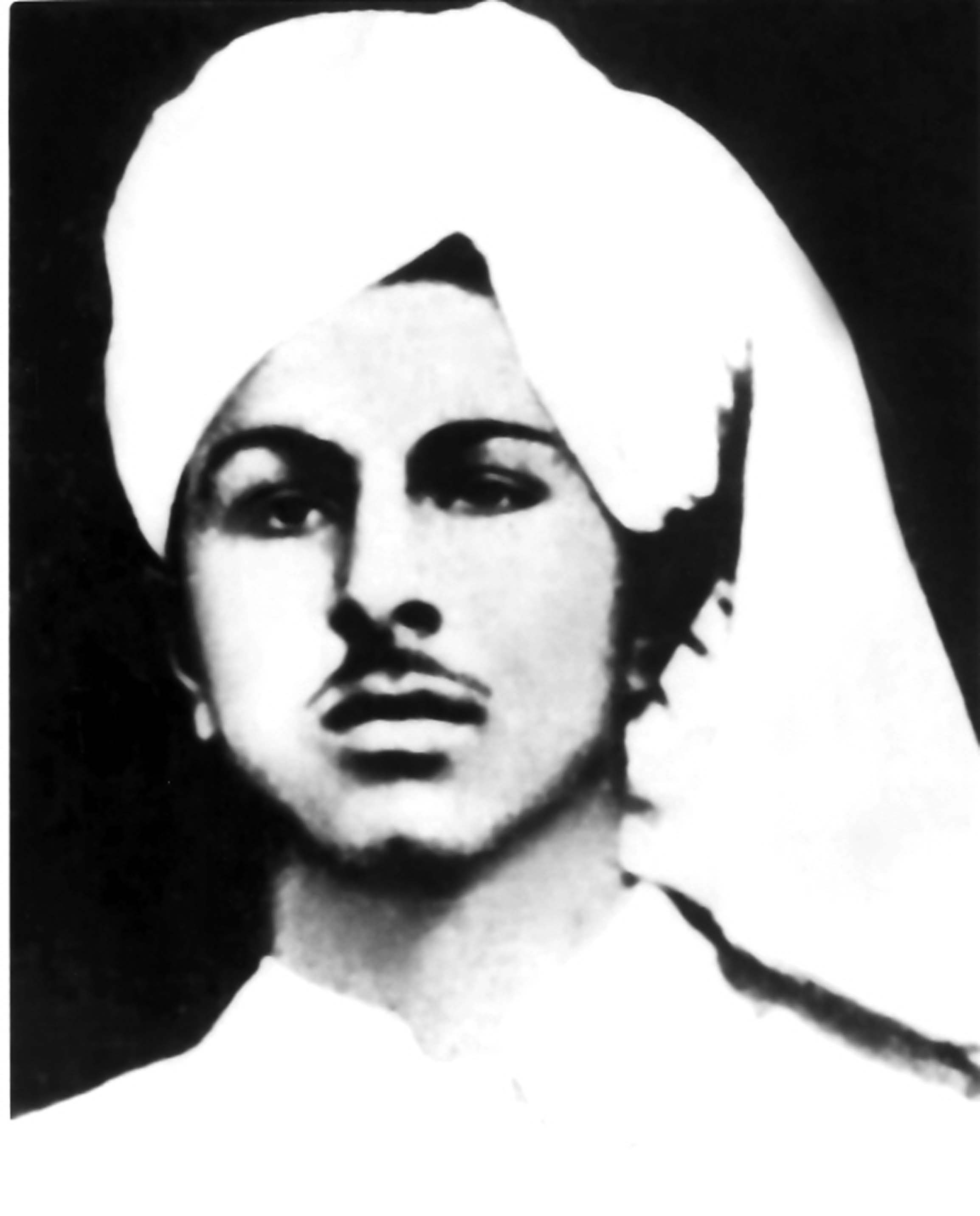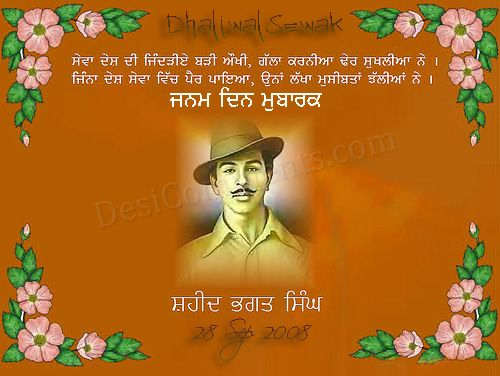skip to main |
skip to sidebar
 Born - 19 July 1827
Born - 19 July 1827
Died - 8 April 1857
Achievements - A sepoy working under the British East India Company, Mangal Pandey's name got etched into the pages of the Indian history after he attacked his senior British officers in an incident, which is today remembered as the Sepoy Mutiny of 1857 or the India's First War of Independence. The reason behind this was the rumor that the cartridges used by Indian sepoys were greased with the fat of cow and pig.
Mangal Pandey, whose name is often preceded by Shaheed meaning a martyr in Hindi, was an Indian soldier during the pre-independence era. A member of the 34th Regiment of the Bengal native infantry of the East India Company, Mangal Pandey is counted among the most popular figures associated with India's freedom struggle in present times. He was born on 19 July 1827 in the Nagwa village in the Ballia district of the Uttar Pradesh state. There still exist families in this village who claim to the descendents of Mangal Pandey.
However, some disputes exist over the exact place where Mangal Pandey was born. So read on to know more about the biography of Mangal Pandey, who joined the sepoy force of the British East India Company in the year 1849 at the age of 22. His name got etched into the pages of the Indian history after he attacked his senior British officers in an incident, which is today called the Sepoy Mutiny of 1857 or the India's First War of Independence. Due to this, he was later captured and hung till death on 8 April in 1857.
Here's more about the life history of Mangal Pandey, who was a devout Hindu and practiced his religion strictly. It was rumored that the cartridge used in the Enfield P-53 rifle which was being used by the Indian sepoys was greased with the fat of pig and cow fat. These cartridges had to be bitten off in order to remove the cover prior use and this went against the religious beliefs of the Muslims and Hindus. The general opinion was that the Britishers had deliberately done this to hurt the sentiments of Indians. And this was the main reason behind the outburst of Pandey's anger.
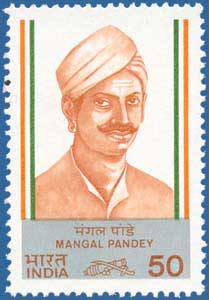



Lai Bahadur Shastri was India’s second Prime Minister. He was born in 1904, in a humble family. He was very laborious since his childhood. His honesty and simplicity was appreciated by people. He actively took part in the freedom struggle. He was a down-to-earth leader.
After the Independence of India, Shastri became the Finance Minister in Nehru’s Ministry. In 1964, Shastri succeeded Nehru as the Prime Minister of lndia.

He had not been in power long when Pakistan sent armed raiders into Jammu and Kashmir. Shastri promised to meet force with force and soon the second Indo-Pakistan war commenced. He gave the slogan ‘Jai Jawan Jai Kisan’. The Indian army reached the outskirts of Lahore.
The United Nations intervened and a cease-fire was declared. In 1966, the Russian Prime Minister, Alek Sei Kosygin, invited Shastri and Agha Khan for a summit in Tashkent where Shastri suffered a fatal heart attack.

He devoted his life for the pride and honor of the country. Shastri was regarded as man of principles. Lal Bahadur Shastri offered his resignation as Union Railway Minister; hours after he was made aware of a train accident that killed around 150 people. He laid the foundation stones of the well-productive schemes like Green Revolutions and White Revolutions. He was the first person to be posthumously awarded the "Bharat Ratna".

His Role In The Freedom Struggle
At the age of 17, he was very impressed with Gandhiji's call for freedom through non - violence and so took part in the Non - co-operation Movement of 1921. He courted arrest but was let off because of his age. But he was not so lucky when he followed Gandhiji in the Satyagraha Movement and spent approximately 8 years in jail over a period of time. Even though he was made to undergo tremendous hardships, he survived with the help of his prayers and physical exercises. He spent this time reading different authors like Hegel, Kant, Marx, Russell and Lenin. He also did some translations and wrote about the Quit India Movement.
Post Independence
He served the Congress in various positions before becoming Prime Minister. He was First General Secretary, and then Home-Minister. In U.P. he made some progressive reforms in the police department, and in 1962, Pandit Nehru invited him to join the Union cabinet as a Minister for railways. A post from which he resigned after taking responsibility for a railway mishap, that happened during his tenure.
Lal Bahadur Shastri showed remarkable abilities of oratorship and courage during the Indo - Pakistan War. He inspired his people through his leadership and offered them a slogan that has been passed down the ages - 'Jai Jawan Jai Kisan'. The Indo - Pak war would have continued, but fortunately, the Russian Government intervened and both India and Pakistan were forced to sign the 'Tashkent Agreement' on January 11, 1966. A day that saw the passing away of this great leader, just a few hours after signing this historic agreement.
He was awarded the 'Bharat Ratna' posthumously, in light of the services rendered to the country. His memorial 'Vijayghat' in delhi is a constant reminder of a great administrator and a fantastic human being.
Active Nationalist
In 1930, Lal Bahadur Shastri became the secretary of the Congress party and later the president of the Allahabad Congress Committee. He played a crucial role during the "Salt Movement". Lal Bahadur lead a door-to-door campaign, urging people not to pay land revenue and taxes to the British authority. The leader was also sent to jail for the campaign. During the long span of nine years he spent in jails, Lal Bahadur utilized the time in reading the social reformers and western philosophers. He was one of the leading and prominent faces that continued the Quit India movement, called by Mahatma Gandhi. Lal Bahadur, in 1937, was elected to the UP Legislative Assembly.
Death
Lal Bahadur Shastri, who had earlier suffered two heart attacks, died of the third cardiac arrest on 11 January, 1966. He is the only Indian Prime Minister, to have died in office, overseas. Lal Bahadur Shastri was the first person to be posthumously awarded the Bharat Ratna, (India's highest civilian award).
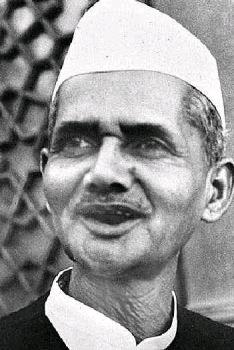
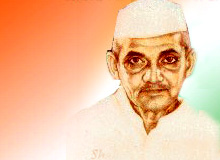


Bhagat Singh was born in September 27, 1907 in the village Banga of Layalpur to Mata Vidyavati and Sardar Kishan Singh. Bhagat Singh grew up in a patriotic atmosphere as his father and uncle, were great freedom fighters and were put in jail many times by the British.
Bhagat Singh grew up at a time when the Freedom struggle was all around him. Since his young age he wondered why so many Indians could not get freedom from a few British invaders, he dreamed of a free India. The massacre at Jallianwala Bagh on April 13, 1919 drove him to go to Amritsar, where he kissed the earth and brought back home a little of the blood soaked soil, he was just 12 years old then. Kartar Sing Sarabha, hanged at the age of 19 by the British was Bhagat Singh's hero.
Bhagat Singh, along with the help of Chandrashekhar Azad, formed the Hindustan Socialist Republican Army (HSRA). The aim of this Indian revolutionary movement was defined as not only to make India independent, but also to create "a socialist India." In February 1928, a committee from England visited India. It came to be known as the Simon Commission. The purpose of its visit was to decide how much freedom and responsibility could be given to the people of India. Indian freedom fighters started an agitation called "Simon go back". It was in this agitation that during a police lathicharge, Lala Lajpat Rai was hurt and died. To avenge the death of Lala Lajpat rai, Bhagat Singh and Rajguru shot and killed the British Officer who had hit Lala Lajpat Rai.
 One of the torchbearers of the revolutionary struggle against the British, Chandrasekhar Azad was born Chandrasekhar Tiwari on July 23, 1906 in the Bhabhra village in Madhya Pradesh. It was during his teenage days that Chandrasekhar adopted the sobriquet of 'Azad' which stands for 'free' in Urdu. Consequent to this, Azad vowed that he would never be taken alive by the British and would instead fight till his last breath.
One of the torchbearers of the revolutionary struggle against the British, Chandrasekhar Azad was born Chandrasekhar Tiwari on July 23, 1906 in the Bhabhra village in Madhya Pradesh. It was during his teenage days that Chandrasekhar adopted the sobriquet of 'Azad' which stands for 'free' in Urdu. Consequent to this, Azad vowed that he would never be taken alive by the British and would instead fight till his last breath.
Like many of his contemporaries, Chandrasekhar Azad too got disenchanted with the non cooperation movement when Gandhi called it off following the Chauri Chaura mob violence in 1922. He was disappointed with the divisions among the political leadership and believed that armed struggle is the only way to realize the dream of a free and socialist India. Azad joined the Hindustan Republican Association (HRA) formed by Sachindranath Sanyal in 1923.
Chandrasekhar Azad played a key role in the famous Kakori train robbery of 1925 in which revolutionaries of HRA led by Ram Prasad Bismil and Ashfaqullah Khan looted the Number 8 Down Train carrying cash-bags belonging to the British Government Treasury. In retaliation, police launched an intense man-hunt and all the revolutionaries were rounded up with the sole exception of Chandrasekhar Azad. In such a grim scenario, Azad took upon himself the onerous task of rejuvenating the armed movement.
 The revolutionary zeal of Chandrasekhar Azad was a manifestation of his principles and philosophies. At an early age, Chandrasekhar became disenchanted with Gandhian philosophy because of the abrupt end to the non cooperation movement in 1922 and the subsequent split of the Congress Party into two factions. A depressing stagnancy prevailed in the political scenario that made Azad all the more determined to seek freedom through armed rebellion.
The revolutionary zeal of Chandrasekhar Azad was a manifestation of his principles and philosophies. At an early age, Chandrasekhar became disenchanted with Gandhian philosophy because of the abrupt end to the non cooperation movement in 1922 and the subsequent split of the Congress Party into two factions. A depressing stagnancy prevailed in the political scenario that made Azad all the more determined to seek freedom through armed rebellion.
Azad believed that armed revolution against the enemies of people was indispensable to kindle patriotism among the masses. He joined hands with other revolutionaries like Ramprasad Bismil, Jogesh Chatterjee, and Sachindranath Sanyal to establish the Hindustan Republican Association (HRA) in October 1924 in Kanpur. The organization was founded with the objective of unleashing a mass movement by inflicting blows to the British machinery.
Like his comrades Azad was also drawn towards the philosophy of socialism and he drew inspiration from the success of the Russian Revolution in 1917. After the arrest of most of the HRA leaders in the Kakori robbery, Azad came together with Bhagat Singh to reorganize the HRA as the Hindustan Socialist Republican Association. Attainment of a free and socialist India became the avowed objective of the organization.
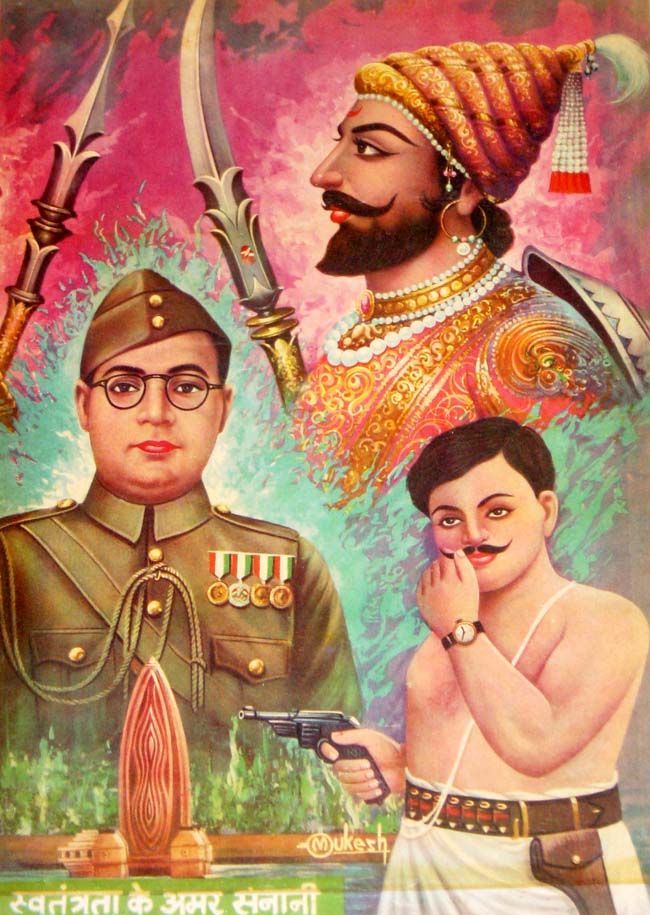 Chandrashekhar Azad was deeply troubled by the Jallianwala Bagh Massacre in Amritsar in 1919. In 1921, when Mahatma Gandhi launched Non-Cooperation movement, Chandrasekhar Azad actively participated in revolutionary activities. He received his first punishment at the age of fifteen. Chandra Shekhar was caught while indulging in revolutionary activities. When the magistrate asked him his name, he said "Azad" (meaning free). Chandrashekhar Azad was sentenced to fifteen lashes. With each stroke of the whip the young Chandrasekhar shouted "Bart Mata Kid Jai". From then on Chandrashekhar assumed the title of Azad and came to known as Chandrashekhar Azad. Chandrashekhar Azad vowed that he would never be arrested by the British police and would die as free man.
Chandrashekhar Azad was deeply troubled by the Jallianwala Bagh Massacre in Amritsar in 1919. In 1921, when Mahatma Gandhi launched Non-Cooperation movement, Chandrasekhar Azad actively participated in revolutionary activities. He received his first punishment at the age of fifteen. Chandra Shekhar was caught while indulging in revolutionary activities. When the magistrate asked him his name, he said "Azad" (meaning free). Chandrashekhar Azad was sentenced to fifteen lashes. With each stroke of the whip the young Chandrasekhar shouted "Bart Mata Kid Jai". From then on Chandrashekhar assumed the title of Azad and came to known as Chandrashekhar Azad. Chandrashekhar Azad vowed that he would never be arrested by the British police and would die as free man.
After the suspension of non-cooperation movement Chandrashekhar Azad was attracted towards more aggressive and revolutionary ideals. He committed himself to complete independence by any means. Chandrashekhar Azad and his compatriots would target British officials known for their oppressive actions against ordinary people and freedom fighters. Chandrashekhar Azad was involved in Kakori Train Robbery (1926), the attempt to blow up the Viceroy's train (1926), and the shooting of Saunders at Lahore (1928) to avenge the killing of Lala Lajpatrai.
Along with Bhagat Singh and other compatriots like Sukhdev and Rajguru, Chandrashekhar Azad formed the Hindustan Socialist Republican Association (HRSA). HRSA was committed to complete Indian independence and socialist principles for India's future progress.
Chandrashekhar Azad was a name of fear for British police. He was on their hit list and the British police badly wanted to capture him dead or alive. On February 27, 1931 Chandrashekhar Azad met two of his comrades at the Alfred Park Allah bad. He was betrayed by an informer who had informed the British police. The police surrounded the park and ordered Chandrashekhar Azad to surrender. Chandrashekhar Azad fought alone valiantly and killed about three thousand policemen. But finding himself surrounded and seeing no route for escape, Chandrashekhar Azad shot himself. Thus he kept his pledge of not being caught alive.

